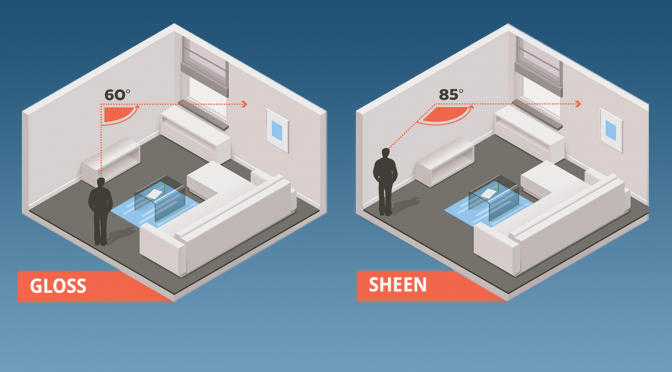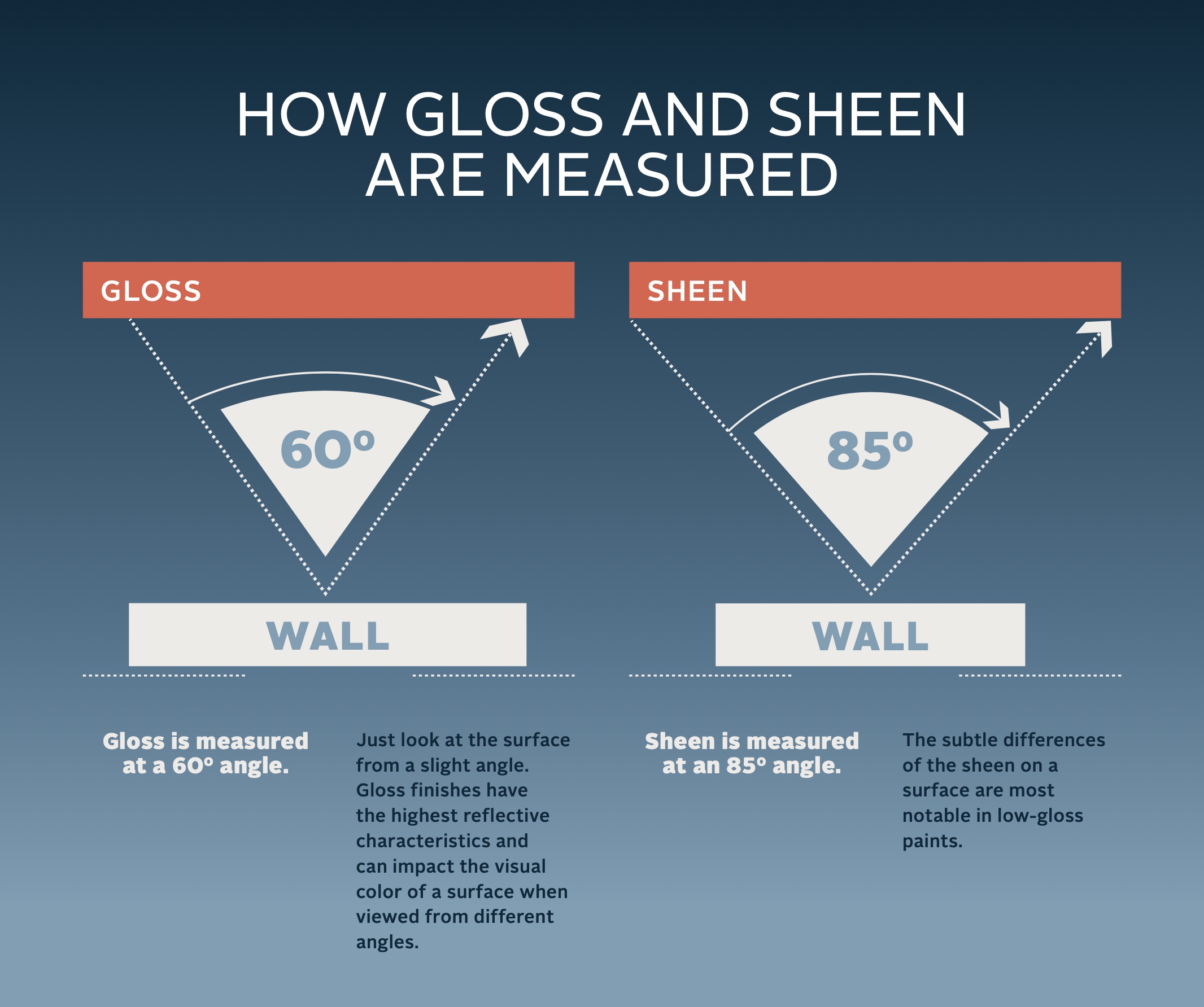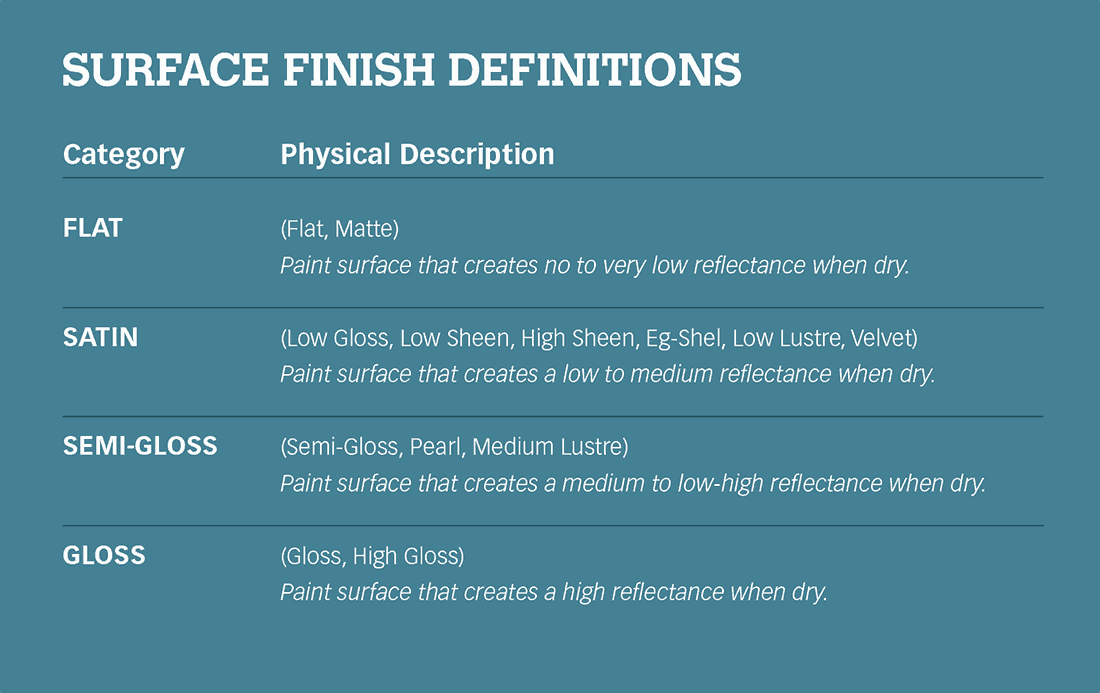In this article, we explore the importance of sheen and gloss, and how those qualities impact both the longevity and appearance of the paint finish.
Starting points
Selecting or recommending the correct paint is about finding the coating with the right mix of functional and aesthetic properties. While choosing product, it’s good to understand how sheen and gloss impact both the longevity and appearance of the finish.
A good place to start would be the new Sherwin-Williams PRO Sheen Selector. This guide offers room-by-room guidance for sheen application, products available by sheen type from Sherwin-Williams, and a Sheen Selector tool that provides technical details for specifications and clarifies inconsistent terminology across industry manufacturers.
“Our new PRO Sheen Selector provides an all-in-one reference that showcases which products are available in the different sheens and how the sheens compare in the Sherwin-Williams lineup,” says Dennis Fiorilli, Director of Product Excellence at Sherwin-Williams. “The new guide provides information that can be easily shared with a client as they decide which finish will work best in their space.”
For more information about the Sheen Selector, talk to your local Sherwin-Williams rep and ask how you can get a copy.
Factors to consider
Pros know, for instance, that kitchens and bathrooms have greater coating demands than a spare bedroom, and that it’s wise to use different paint in areas where food is prepared than an office. But you’ll also want to consider other factors.
For instance, is the room a high-traffic or low-traffic area? Windows also come into play. You might not want to use a high-gloss finish in a room flooded with natural light. It’s helpful to consider the room from all angles before making a decision.
Is the client willing to upgrade to get the best finish possible? In that case, recommend Sherwin-Williams Emerald® Designer Edition™ Eg-Shel and Cashmere® Eg-Shel, which both provide a premium finish.
Four important points to remember
- Gloss and sheen choice should be based upon the type of room, what is being painted, lighting, position of windows, traffic, performance expectations, and aesthetic preference.
- Every Sherwin-Williams product has a gloss or sheen value. Some have both.
- Paints with a lower gloss/sheen will hide wall imperfections better than paints with a higher gloss/sheen.
- Paints with a higher gloss/sheen will generally be easier to clean. However, the exceptions are products like Emerald® Designer Edition™ Interior Latex, Emerald® Interior Acrylic Latex and Duration Home® Interior Acrylic Latex, which provide exceptional washability at all sheen levels—including a truly washable flat.
Measuring gloss and sheen
Gloss and sheen reflectance are measured on a scale of 0 (no gloss) to 100 (mirror-like).
Reflectance is typically measured by deflecting a single beam of light at a specific angle off a surface. The light is deflected into a receptor, which measures the intensity in units. The higher the number of units, the shinier the surface.
Gloss is measured at 60° angle. Gloss finishes have the highest reflective characteristics and can impact the visual color of a surface when viewed from different angles.
Sheen is measured at an 85° angle. The subtle differences of the sheen on a surface are most notable in low-gloss paints.
60° and 85° references are a guide to reflect average gloss and sheens in manufacturing when force dried at 4 mils wet. Refer to the product data sheets for more information.
Surface finish definitions
- Flat category (flat, matte): Paint surface that creates no to very low reflectance when dry.
- Satin category (low gloss, low sheen, high sheen, eg-shel, low lustre, velvet): Paint surface that creates a low to medium reflectance when dry.
- Semi-gloss category (semi-gloss, pearl, medium lustre): Paint surface that creates a medium to low-high reflectance when dry.
- Gloss category (gloss, high gloss): Paint surface that creates a high reflectance when dry.
The right coating for the job
Sherwin-Williams offers coatings that meet all performance levels in the full range of gloss and sheen levels. It’s just about finding the coating that’s best for your client.
“When it comes to choosing the right coating for the job, I recommend painters use resources like the new Residential PRO Sheen Selector to understand how each sheen can provide the best performance for a project,” Fiorilli says. “For example, a flat finish will help hide imperfections, while a satin finish tends to be more washable. Providing the right sheen to the customer will make for a more satisfied client.”



